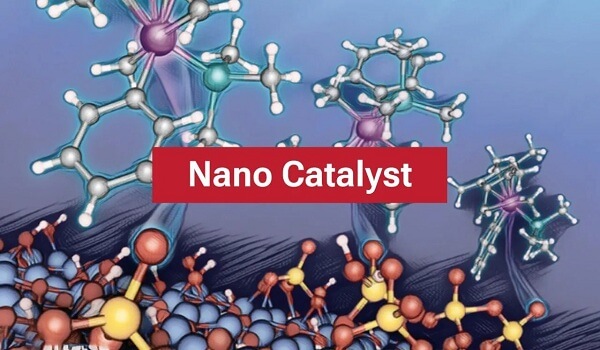Researchers at the Institute of Nano Science and Technology, an autonomous institute under the Department of Science and Technology, have developed a state-of-the-art copper-based catalyst with a unique star-shaped nanostructure.
Copper-Based Catalyst
- This catalyst is prepared by growing copper oxide nanostructures on sporopollenin template.
- It provides a sustainable route for industrial chemical reactions.
- It is considered a Green Catalyst as it is available in abundant quantities.
- It is low toxicity.
- Efficient and reusable.
- It is efficient in water without any additives and can be reused multiple times.
Uses
- Biological reactions: Helpful in various chemical reactions.
- Environmental improvement: Helpful in reducing pollution.
- Nanoscale electronics: Useful in micro-electronic devices.
- Surface-enhanced Raman spectroscopy (SERS): Important for surface analysis.
Advantages of Copper-based Catalysts
- Abundance and cost-effectiveness
- Easily available: Copper is naturally available in abundance.
- Low cost: It is a cheap metal, making it a cost-effective option.
Various oxidation states
- Flexible reactions: Copper is found in various oxidation states (Cu⁰, Cu⁺, Cu²⁺, Cu³⁺), which enables it to participate in many chemical reactions.
Versatile applications
- Redox reactions: Widely useful in oxidation-reduction processes.
- Carbon monoxide oxidation: Effective in converting CO to CO₂.
- Selective oxidation: Enables selective oxidation of organic compounds.
- Electrochemical reactions: Plays an important role in hydrogen production reactions (HER).
Nanotechnology
- Nanotechnology is technology that manipulates matter at the atomic, molecular, and supramolecular levels, ranging from about 1 to 100 nanometers.
- A nanometer (nm) is one billionth (10⁻⁹) of a meter.
- It is the manufacture and use of materials and devices so small that they cannot be made any smaller. Multidisciplinary approach
It includes contributions from many fields, such as:
- Applied Physics
- Materials Science
- Chemistry
- Biology
- Surface Science
- Robotics, Engineering and Biomedical Engineering
Contribution of Physics to Nanotechnology
- Nanoelectronics
- Nanomechanics
- Nanophotonics
- Nanoionics
Approaches to Nanotechnology
- Bottom-up approach: In this, materials and devices are made from molecular components, which are chemically self-assembled.
- Top-down approach: In this, nano-objects are made from larger components, but there is no atomic level control.
Basis of development of nanotechnology
- Renewed interest in colloidal science.
- Development of new generation analytical instruments, such as:
- Atomic Force Microscope
- Scanning Tunneling Microscope

